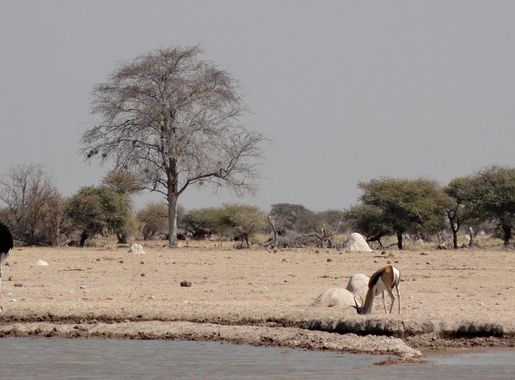
The Enchanting Nxai Pan National Park
Experience the majesty of Botswana's Nxai Pan National Park, where ancient baobabs, diverse wildlife, and serene landscapes create an unforgettable adventure.
Nxai Pan National Park in Botswana is a hidden gem that offers an unforgettable experience in the African wilderness. Located in the northern part of the Makgadikgadi Basin, this park is renowned for its vast salt pans, which transform into lush grasslands during the rainy season. The park is a haven for wildlife, including large herds of zebras, giraffes, and elephants. Predators like lions and cheetahs also roam the area, making it a prime location for wildlife enthusiasts. One of the most striking features of Nxai Pan National Park is the Baines' Baobabs. These ancient and majestic trees, named after the explorer Thomas Baines, stand as silent sentinels in the park's stark landscape. The contrast between the baobabs and the surrounding terrain is a sight to behold and a favorite spot for photographers. Visiting Nxai Pan National Park offers more than just wildlife viewing. The park's unique ecosystem provides opportunities for birdwatching, especially during the migratory season. The serene and remote environment is perfect for those looking to escape the hustle and bustle of city life and immerse themselves in nature's tranquility.
Local tips in Nxai Pan National Park
- Visit during the rainy season (November to April) to see the transformation of the salt pans into lush grasslands.
- Bring a good camera to capture the stunning landscapes and wildlife.
- Hire a local guide to enhance your safari experience and increase your chances of spotting wildlife.
- Pack plenty of water and sun protection as the park can get very hot, especially during the dry season.
- Consider staying in one of the park's lodges or campsites for a more immersive experience.
The Enchanting Nxai Pan National Park
Nxai Pan National Park in Botswana is a hidden gem that offers an unforgettable experience in the African wilderness. Located in the northern part of the Makgadikgadi Basin, this park is renowned for its vast salt pans, which transform into lush grasslands during the rainy season. The park is a haven for wildlife, including large herds of zebras, giraffes, and elephants. Predators like lions and cheetahs also roam the area, making it a prime location for wildlife enthusiasts. One of the most striking features of Nxai Pan National Park is the Baines' Baobabs. These ancient and majestic trees, named after the explorer Thomas Baines, stand as silent sentinels in the park's stark landscape. The contrast between the baobabs and the surrounding terrain is a sight to behold and a favorite spot for photographers. Visiting Nxai Pan National Park offers more than just wildlife viewing. The park's unique ecosystem provides opportunities for birdwatching, especially during the migratory season. The serene and remote environment is perfect for those looking to escape the hustle and bustle of city life and immerse themselves in nature's tranquility.
When is the best time to go to Nxai Pan National Park?
Iconic landmarks you can’t miss
Kgalagadi Transfrontier Park
Explore the breathtaking landscapes and diverse wildlife of Kgalagadi Transfrontier Park, a premier destination in the Kalahari Desert.
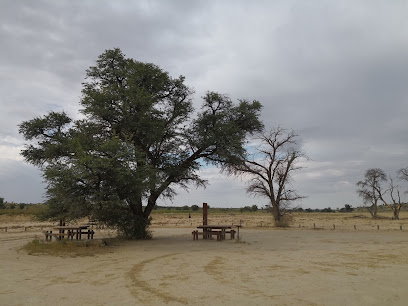
Makgadikgadi Pans National Park
Explore the breathtaking landscapes and diverse wildlife of Makgadikgadi Pans National Park, a true gem in Botswana's natural treasures.
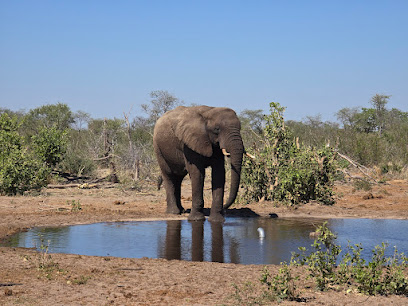
Central Kalahari Game Reserve
Explore the vast wilderness of Central Kalahari Game Reserve, a haven for wildlife enthusiasts and nature lovers in Botswana's stunning landscapes.

Baines Baobabs
Discover the breathtaking beauty of Baines Baobabs, Botswana's iconic natural wonder featuring ancient baobab trees and stunning African landscapes.
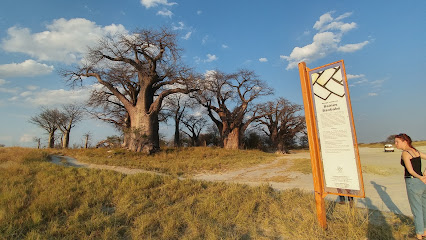
Makadikadi Basin
Discover the enchanting beauty of the Makadikadi Basin, a vast salt flat in Botswana, perfect for adventure, wildlife encounters, and stunning sunsets.
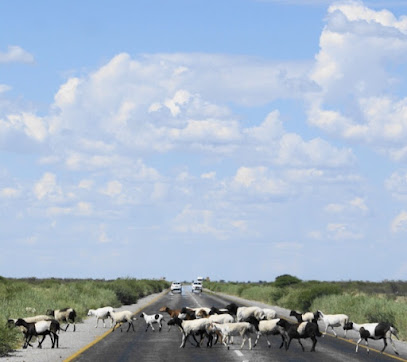
Nata Bird Sanctuary
Discover the vibrant avian life and stunning landscapes of Nata Bird Sanctuary, Botswana's premier bird watching destination in the heart of the Kalahari.
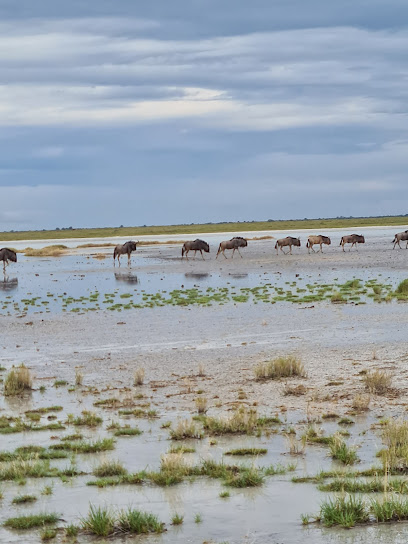
Leroo La Tau
Experience the beauty of Botswana at Leroo La Tau, a stunning lodge offering luxury accommodations and unforgettable wildlife adventures along the Boteti River.
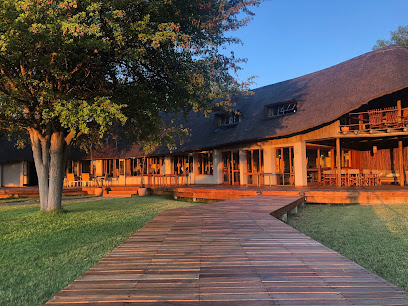
Meno-A-Kwena Tented Camp
Discover the tranquility of Meno-A-Kwena Tented Camp in Makgadikgadi Pans National Park, where luxury meets the wild heart of Botswana.

South camp Nxai Pan
Experience the serene beauty of Botswana's wilderness at South Camp Nxai Pan, your perfect getaway for adventure and relaxation.

Northern Tuli Game Reserve
Explore the magic of Botswana's Northern Tuli Game Reserve, a wildlife and safari park teeming with diverse species and breathtaking landscapes.
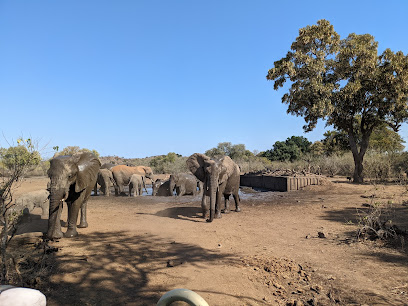
San Camp
Experience the luxury of San Camp nestled in the mesmerizing Makgadikgadi Pans, where adventure and tranquility meet under the African sky.

Nwetwe Pan
Explore Nwetwe Pan, a seasonal lake in Botswana, where stunning wildlife and breathtaking landscapes await nature enthusiasts and photographers.
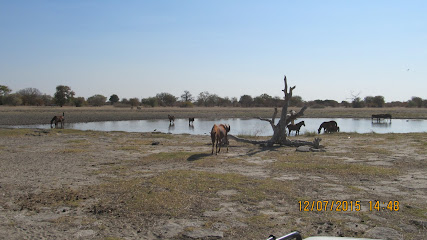
Nxai Pan
Experience the serene beauty of Nxai Pan, a stunning lake in Botswana's national park, perfect for wildlife viewing and breathtaking sunsets.
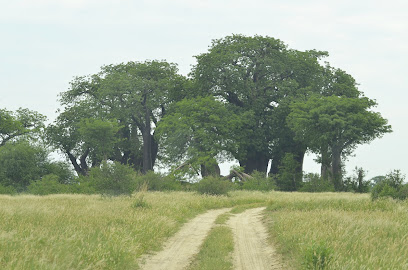
Kwando Nxai Pan Lodge
Experience the untamed beauty of Botswana at Kwando Nxai Pan Lodge, where luxury meets adventure in the heart of nature.
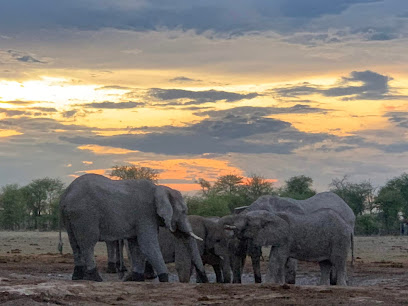
Baobab Chapmana
Discover the majestic Baobab Chapmana, a historical landmark in Tutume, Botswana that symbolizes resilience and natural beauty.
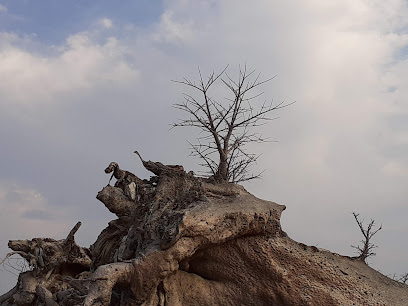
Unmissable attractions to see
Boteti River Camp
Discover the beauty of Botswana at Boteti River Camp, a perfect family-friendly escape along the stunning Boteti River.

Sua Pan
Explore Sua Pan, Botswana's mesmerizing seasonal lake, where breathtaking landscapes and rich wildlife await every nature enthusiast.
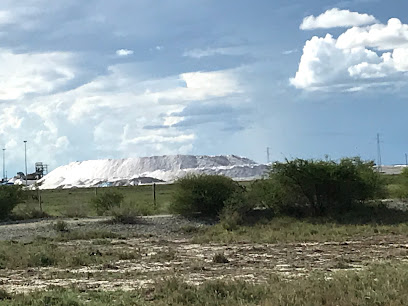
Nata Bird Sanctuary
Explore the Nata Bird Sanctuary in Botswana, a national reserve renowned for its diverse bird life and stunning natural scenery.
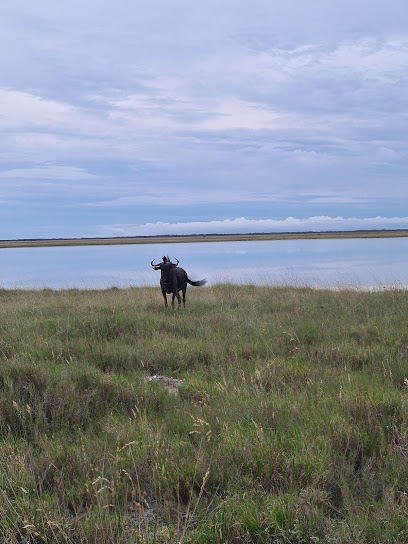
Meno-A-Kwena Tented Camp
Discover the natural beauty and wildlife of Botswana at Meno-A-Kwena Tented Camp, nestled in the breathtaking Makgadikgadi Pans National Park.

Kumaga Entrance to Makgadikgadi Pans National Park
Explore the breathtaking Kumaga Entrance to Makgadikgadi Pans National Park, a wildlife haven and stunning natural landscape in Botswana.
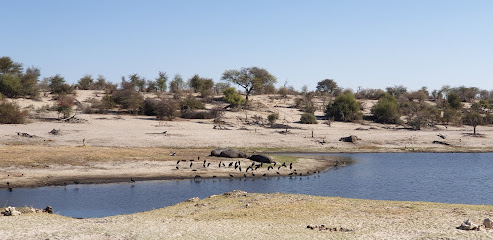
Tony Mobile Safari
Experience the thrill of wildlife encounters at Tony Mobile Safari, your gateway to Botswana's diverse ecosystems and unforgettable adventures.
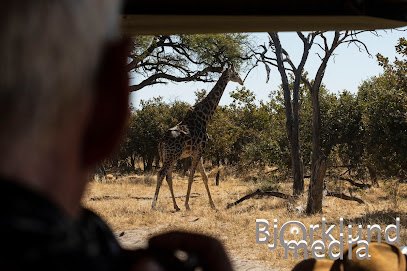
Aardvark
Experience the magic of Aardvark in Tutume, Botswana – a captivating destination that combines adventure with rich cultural experiences.
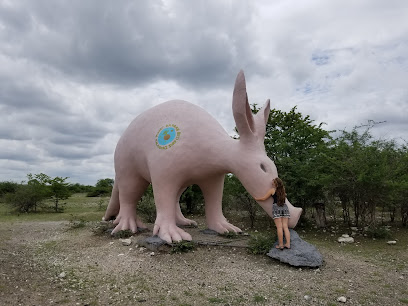
Baobab Chapmana
Explore Baobab Chapmana in Tutume, Botswana - a historical landmark featuring majestic baobab trees and rich local culture.
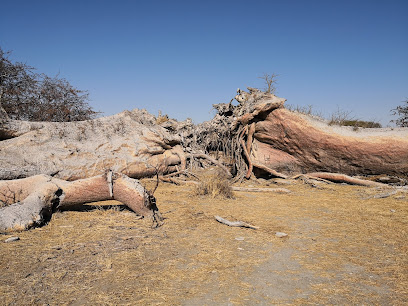
Green’s Baobab
Explore the iconic Green's Baobab in Botswana, a natural wonder that embodies the beauty and resilience of Africa's landscapes.
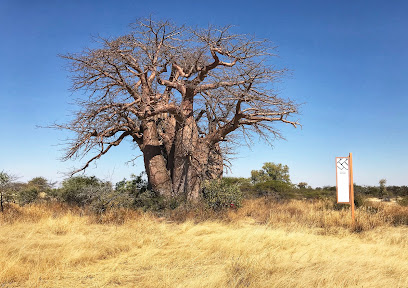
NG/47 Concessionaire
Explore the serene beauty and rich biodiversity of NG/47 Concessionaire, Botswana's stunning state park perfect for nature lovers and adventure seekers.

Joy Pan Tours
Discover Botswana's stunning landscapes and rich culture with Joy Pan Tours in Gweta, your gateway to unforgettable adventures.
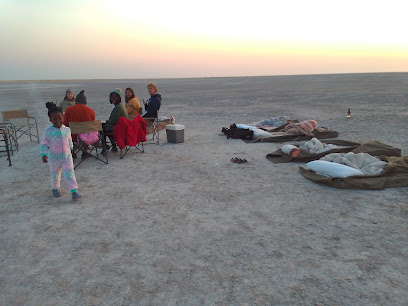
Flughafen
Experience the vibrant atmosphere and essential services at Flughafen, your gateway to unforgettable adventures in the region.
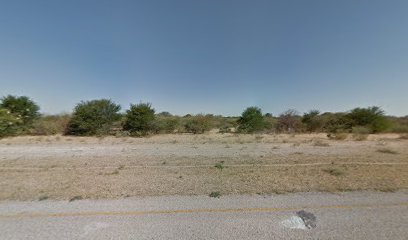
CT/1 Concessionaire (hunting)
Discover the majestic wildlife and scenic beauty of CT/1 Concessionaire, a premier safari park in Botswana where adventure meets nature's splendor.

Essential places to dine
Bull & Bush
Experience the vibrant culinary scene at Bull & Bush in Gaborone - where local flavors meet international cuisine.
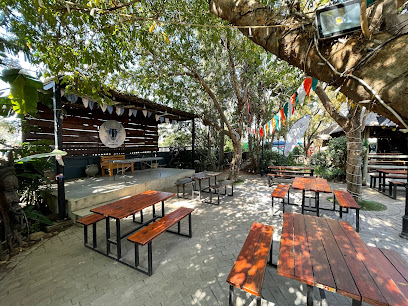
Nando's Francistown Galo
Experience the rich flavors of peri-peri chicken at Nando's Francistown Galo - a family-friendly restaurant in the heart of Botswana.
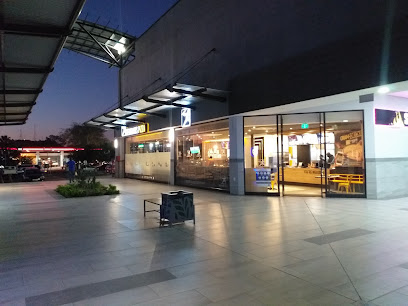
Two Six Seven
Experience the vibrant flavors of Botswana at Two Six Seven - a top-rated restaurant along Gaborone's scenic Riverwalk.
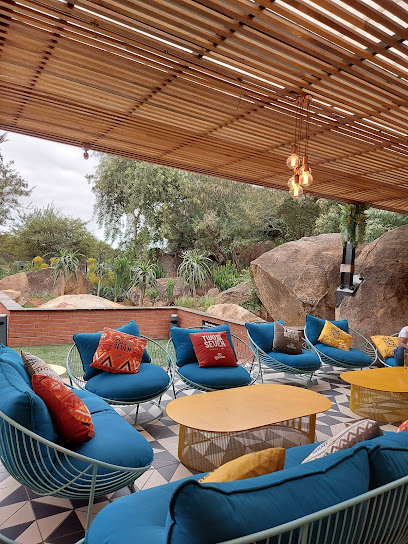
Chutney Indian Restaurant
Experience exquisite Indian cuisine at Chutney Indian Restaurant in Gaborone's vibrant West Gate Mall.
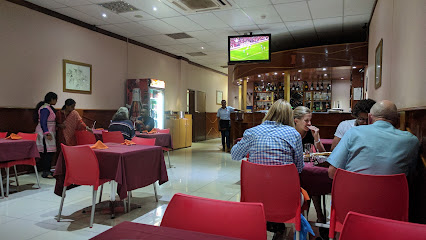
The Old House
Discover comfort and charm at The Old House in Kasane - your gateway to exploring Botswana's breathtaking wildlife and landscapes.
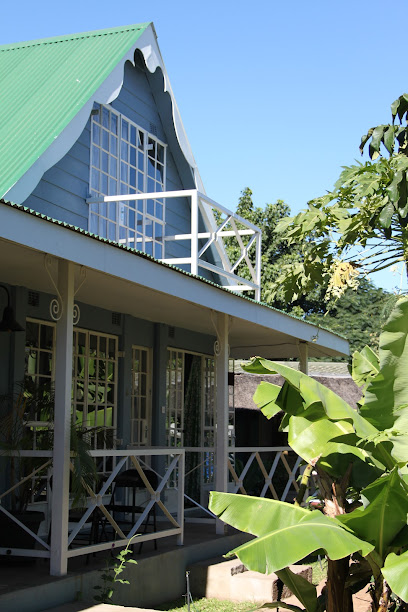
Marc's Eatery
Experience the vibrant flavors of Botswana at Marc's Eatery - your go-to spot for delightful breakfasts and freshly baked goods in Maun.
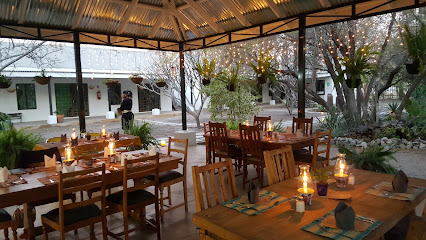
Makgadikgadi Pans National Park
Explore the stunning landscapes and unique wildlife at Makgadikgadi Pans National Park—an unmissable gem in Botswana's wilderness.
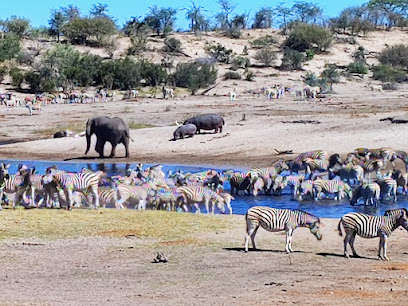
Rhapsody's
Discover Rhapsody's in Gaborone – where local flavors meet global cuisine in a vibrant setting perfect for all occasions.
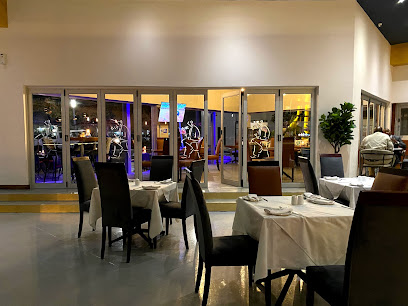
Thorn Tree
Discover Thorn Tree in Francistown: A unique restaurant blending local flavors with international cuisine in a cozy atmosphere.
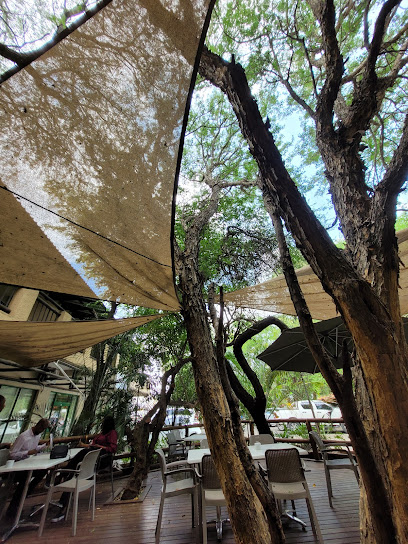
Barbara‘s Bistro
Discover the culinary delights of Francistown at Barbara's Bistro – where local flavors meet warm hospitality.
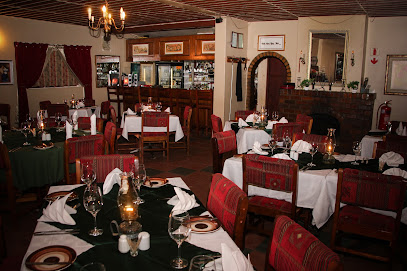
Nxai Pan National Park
Experience the stunning landscapes and diverse wildlife at Nxai Pan National Park – a must-visit destination in Botswana.

Bonita Gardens Cafe - Palapye, Botswana
Experience tranquility at Bonita Gardens Cafe in Palapye - savor delicious food and aromatic coffee surrounded by lush gardens.

Hilary's Restaurant
Discover the flavors of Botswana at Hilary's Restaurant in Maun, where delightful dishes meet a warm and inviting atmosphere.
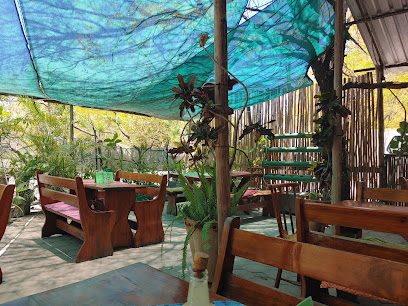
Tai Pan Fast Foods
Experience authentic Botswana cuisine at Tai Pan Fast Foods in Gaborone's lively African Mall, where traditional flavors meet modern convenience.
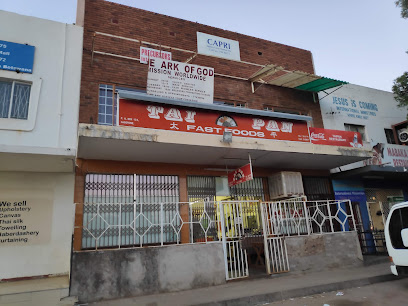
The Coffee Buzz
Discover The Coffee Buzz in Kasane - your cozy haven for quality coffee and delicious bites amidst Botswana's natural beauty.

Markets, malls and hidden boutiques
Botswana Craft
Explore Botswana Craft - a vibrant art center in Gaborone showcasing local craftsmanship and authentic cuisine amidst a rich cultural backdrop.
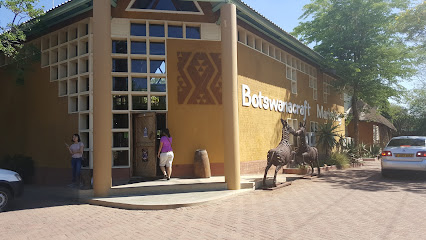
Makgadikgadi Pans National Park
Explore the awe-inspiring landscapes and unique wildlife of Makgadikgadi Pans National Park, a must-visit destination in Botswana's wilderness.
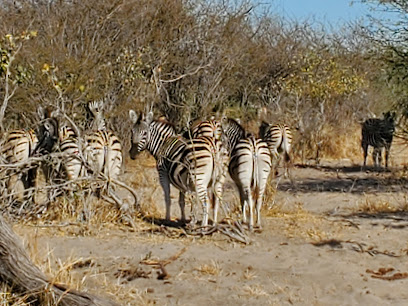
Nxai Pan National Park
Discover Nxai Pan National Park: A breathtaking national park in Botswana, rich in wildlife, stunning landscapes, and unique experiences.
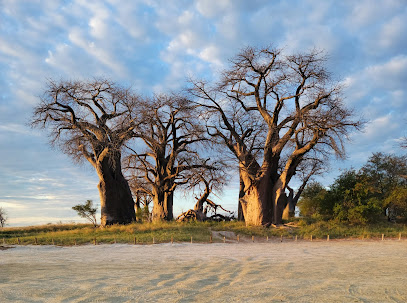
Baines Baobabs
Discover the breathtaking beauty of Baines Baobabs, where ancient trees and serene landscapes create a magical experience in Botswana's wilderness.
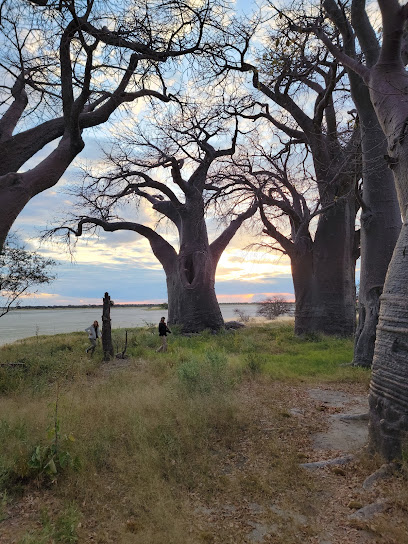
Meno-A-Kwena Tented Camp
Discover the breathtaking beauty of Meno-A-Kwena Tented Camp in Makgadikgadi Pans National Park, where luxury meets the wild heart of Africa.

South camp Nxai Pan
Discover the tranquility of South Camp Nxai Pan, where adventure meets comfort in the heart of Botswana's stunning wilderness.

San Camp
Discover the enchanting beauty of San Camp in Makgadikgadi Pans National Park, a luxurious retreat in the heart of Botswana's wilderness.

The Space Botswana
Explore the rich artistic heritage of Botswana at The Space Botswana, a vibrant gallery showcasing local talent in the heart of Maun.
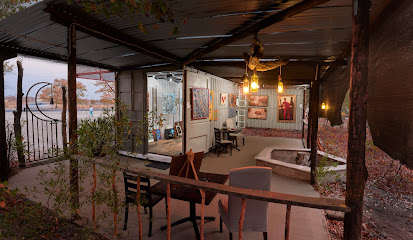
Nxai Pan
Explore Nxai Pan, a tranquil lake in Botswana's Nxai Pan National Park, known for its stunning landscapes and rich wildlife experiences.
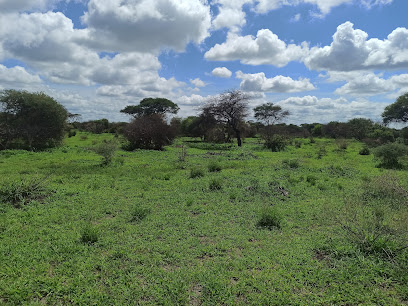
Kwando Nxai Pan Lodge
Discover the enchanting wilderness at Kwando Nxai Pan Lodge, where luxury meets nature in Botswana's breathtaking landscapes.
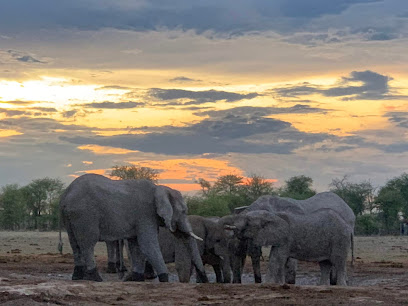
Saverite Gweta
Discover the essence of Botswana with local products at Saverite Gweta - your grocery haven in the heart of Gweta.
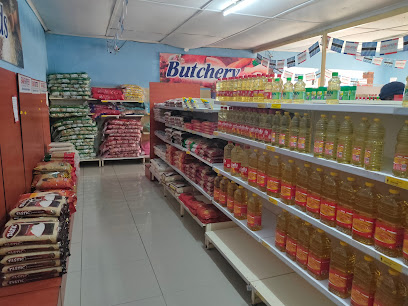
Nxai Pan North Camp
Discover the wild beauty of Nxai Pan at Nxai Pan North Camp, your perfect base for adventure in Botswana's breathtaking landscapes.
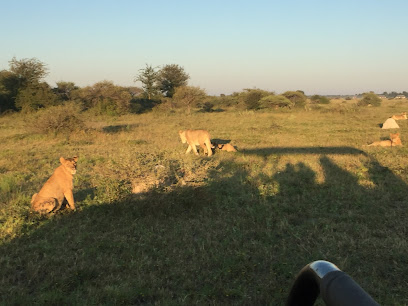
Wings
Explore the vibrant local flavors and artisanal products at Wings in Gweta, a must-visit grocery store for every traveler.
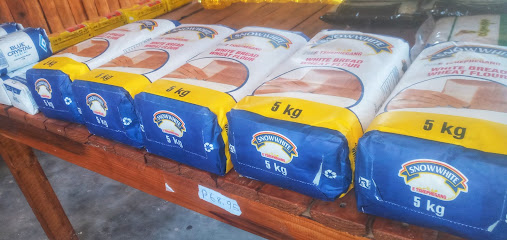
Uniquely Botswana
Explore the essence of Botswana through handcrafted treasures at Uniquely Botswana in Gaborone, your gateway to unique home goods and cultural artistry.
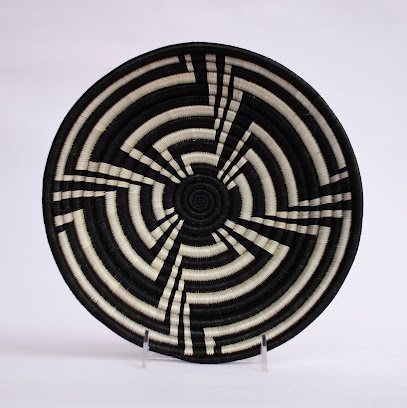
TauTswana
Experience the authentic taste of Botswana at TauTswana, a premier butcher shop in Xhumaga, specializing in locally sourced meats and culinary treasures.

Essential bars & hidden hideouts
Bull & Bush
Bull & Bush: A vibrant restaurant in Gaborone offering delicious local and international cuisine amidst a charming outdoor setting.
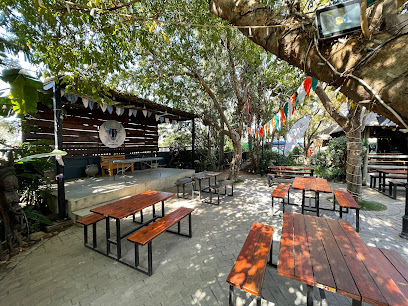
Two Six Seven
Explore the culinary delights of Gaborone at Two Six Seven, where local flavors meet global cuisine in a vibrant riverside setting.
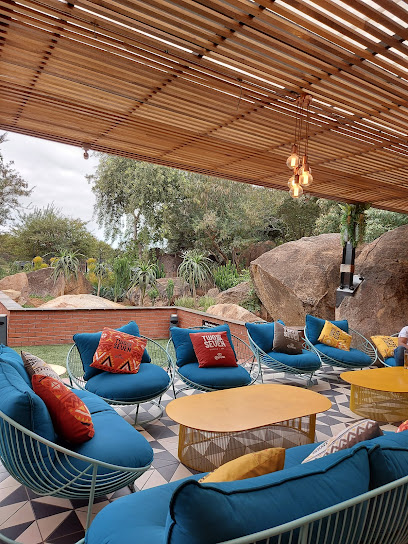
Makgadikgadi Pans National Park
Explore the stunning landscapes and unique wildlife of Makgadikgadi Pans National Park, a breathtaking gem in Botswana.
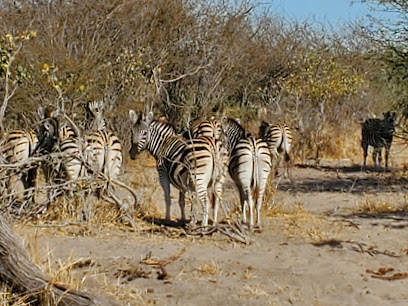
Nxai Pan National Park
Explore Nxai Pan National Park, a wildlife haven in Botswana, featuring stunning landscapes and rich biodiversity for an unforgettable adventure.

Leroo La Tau
Immerse yourself in the wilderness at Leroo La Tau, a luxurious lodge along the Boteti River, perfect for an unforgettable safari experience.
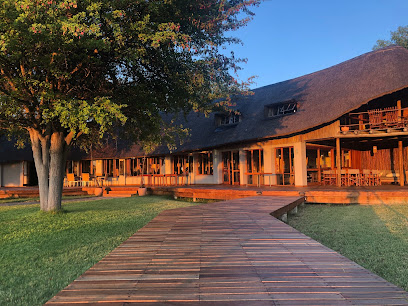
Meno-A-Kwena Tented Camp
Experience the unique blend of adventure and comfort at Meno-A-Kwena Tented Camp in Botswana's breathtaking Makgadikgadi Pans National Park.

Main Deck Restaurant & Bar
Experience the vibrant culinary scene of Gaborone at Main Deck Restaurant & Bar, where local flavors meet international cuisine.
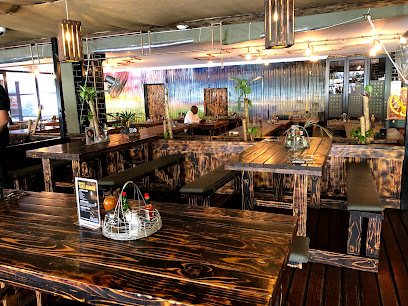
South camp Nxai Pan
Discover the tranquility and wildlife wonders at South Camp Nxai Pan, the perfect escape for nature lovers in Botswana.

Sexaxana Bar
Experience the vibrant nightlife of Ghanzi at Sexaxana Bar, where locals and travelers come together over drinks in a cozy atmosphere.
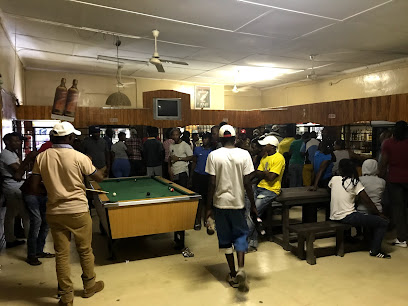
Nxai Pan Self Catering Apartments
Experience the beauty of Botswana from the comfort of Nxai Pan Self Catering Apartments, perfect for groups and families seeking adventure and relaxation.
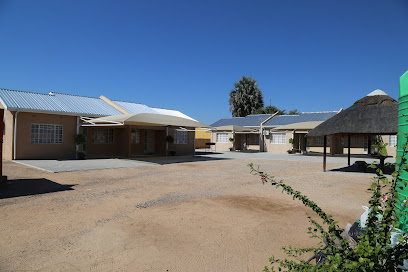
Peech Bac Bar
Experience the vibrant nightlife of Mochudi at Peech Bac Bar, a perfect blend of local culture and lively atmosphere.

Nxai Pan
Discover Nxai Pan: A serene lake in Botswana rich in wildlife and stunning landscapes, perfect for nature lovers and adventure seekers alike.
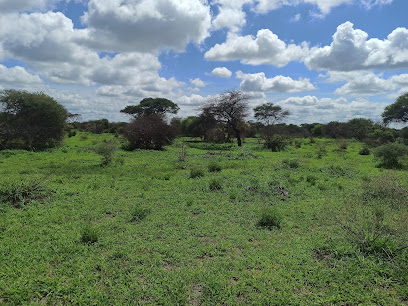
Kwando Nxai Pan Lodge
Discover the perfect blend of luxury and wilderness at Kwando Nxai Pan Lodge, a premier destination for nature enthusiasts in Botswana.
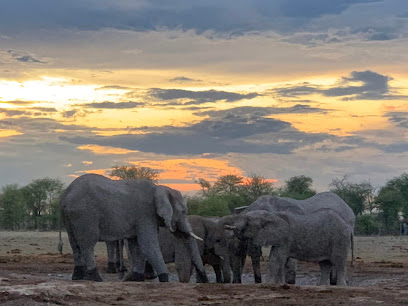
Nxai Pan North Camp
Discover the tranquil beauty of Nxai Pan North Camp - a perfect blend of comfort and wilderness in Botswana's stunning landscapes.
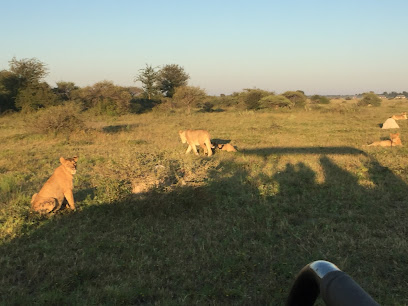
Bludot Liquor Store
Discover Bludot Liquor Store in Gweta, Botswana – a serene bar offering excellent service and a perfect retreat for travelers seeking relaxation.
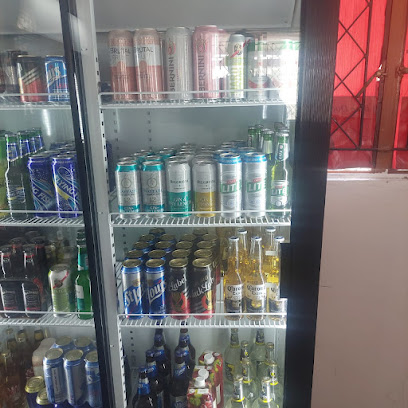
Local Phrases about Nxai Pan National Park
-
- HelloDumela
[doo-MEH-lah] - GoodbyeSala sentle
[SAH-lah sehn-TLEH] - YesEe
[EE] - NoNnyaa
[NYAH] - Please/You're welcomeKe kopa
[keh KOH-pah] - Thank youKe a leboga
[keh ah leh-BOH-gah] - Excuse me/SorryNtshwarele
[ntsh-wah-REH-leh] - How are you?O tsogile jang?
[oh tsoh-HEEL-leh jahng] - Fine. And you?Ke tsogile
[keh tsoh-HEEL-leh] - Do you speak English?O bua Setswana?
[oh BOO-ah seht-SWAH-nah] - I don't understandGa ke itse
[gah keh EET-seh]
- HelloDumela
-
- I'd like to see the menu, pleaseNka bona menu, kamoso
[ng-kah boh-nah MEH-noo, kah-MOH-soh] - I don't eat meatGa ke itse nyama
[gah keh EET-seh NYAH-mah] - Cheers!Pholo e ntle
[FOH-loh eh n-TLEH] - I would like to pay, pleaseNka lefa, kamoso
[ng-kah LEH-fah, kah-MOH-soh]
- I'd like to see the menu, pleaseNka bona menu, kamoso
-
- Help!Boitumelo!
[boh-ee-too-MEH-loh] - Go away!Tshwara!
[tsh-WAH-rah] - Call the Police!Bula metsi!
[BOO-lah MEH-tsee] - Call a doctor!Bula mofumahali!
[BOO-lah moh-foo-MAH-hah-lee] - I'm lostKe itseletse
[keh eet-seh-LEH-tseh] - I'm illKe lebetse
[keh leh-BEH-tseh]
- Help!Boitumelo!
-
- I'd like to buy...Nka rekela...
[ng-kah rreh-KEH-lah] - I'm just lookingKe batla go bona fela
[keh bah-TLA goh BOH-nah FEH-lah] - How much is it?Ke bokae?
[keh boh-KAH-eh] - That's too expensiveEna e mahala ka nako e nngwe
[EH-nah eh mah-HAH-lah kah NAH-koh eh n-NG-weh] - Can you lower the price?O tla bolaya sefebe?
[oh tlah boh-LAH-yah seh-FEH-beh]
- I'd like to buy...Nka rekela...
-
- What time is it?Ke nako mang?
[keh NAH-koh mahng] - It's one o'clockKe nako ya mosha
[keh NAH-koh yah moh-SHAH] - Half past (10)Nako ya metsotso
[NAH-koh yah meh-TSOH-tsoh] - MorningMosomo
[moh-SOH-moh] - AfternoonMetsi a metsi
[MEH-tsee ah MEH-tsee] - EveningMetsi a nne
[MEH-tsee ah n-neh] - YesterdayMasego a kgwedi
[MAH-seh-goh ah kgweh-dee] - TodayNametsi
[nah-MEH-tsee] - TomorrowKgosi
[koh-shee] - 1Nngwe
[nng-weh] - 2Pele
[peh-leh] - 3Motho
[moh-TOH] - 4Nye
[nyeh] - 5Tlhano
[tlhah-noh] - 6Supa
[SOO-pah] - 7Lesome
[leh-SOH-meh] - 8Leserwa
[leh-SEH-ruh-wah] - 9Lesele
[leh-SEH-leh] - 10Leshome
[leh-SHOH-meh]
- What time is it?Ke nako mang?
-
- Where's a/the...?Ke kae...?
[keh KAH-eh] - What's the address?Ke kae nako ya ntlha?
[keh KAH-eh NAH-koh yah n-TLAH] - Can you show me (on the map)?O ka nka bona (ka map)?
[oh kah ng-kah BOH-nah (kah map)] - When's the next (bus)?Nako ya morago ke eng?
[NAH-koh yah moh-RAH-goh keh ehng] - A ticket (to ....)Lekgotla (go ....)
[leh-KOHT-lah goh]
- Where's a/the...?Ke kae...?
History of Nxai Pan National Park
-
The Nxai Pan area was originally formed thousands of years ago when it was part of the ancient super lake, Lake Makgadikgadi. Over time, the lake dried up, leaving behind vast salt pans and the grass-covered plains that characterize Nxai Pan today. This geological transformation has created a unique landscape that is both a historical and ecological treasure.
-
The indigenous San people, also known as the Bushmen, have lived in and around the Nxai Pan area for thousands of years. Their deep understanding of the land, wildlife, and survival techniques has been passed down through generations. The San's rock art, found in the surrounding areas, provides a glimpse into their rich cultural heritage and connection to the land.
-
In the 19th century, European explorers such as David Livingstone and Frederick Courtney Selous ventured into the Nxai Pan region. Their journals and sketches document the area's diverse wildlife and unique landscapes. These early explorations contributed to the world's understanding of southern Africa's natural beauty and biodiversity.
-
Nxai Pan was officially designated as a national park in 1992, becoming part of the larger Makgadikgadi and Nxai Pan National Park complex. This designation aimed to protect the area's unique ecosystems, including its seasonal waterholes that attract a plethora of wildlife such as zebras, elephants, and various bird species. The park's establishment marked a significant step in Botswana's conservation efforts.
-
Over the years, several conservation initiatives have been implemented in Nxai Pan National Park to preserve its rich biodiversity. Efforts include anti-poaching measures, habitat restoration projects, and community-based conservation programs. These initiatives aim to balance ecological preservation with the needs of local communities, ensuring the park's sustainability for future generations.
-
In recent decades, Nxai Pan National Park has become a notable destination for eco-tourism. Lodges and guided safari tours offer visitors the chance to experience the park's wildlife and landscapes up close. Tourism development has not only provided economic benefits to the local communities but also increased global awareness of the park's natural wonders.
Nxai Pan National Park Essentials
-
Nxai Pan National Park is located in northeastern Botswana. The nearest major airport is Maun International Airport, approximately 150 kilometers away. From Maun, you can either hire a 4x4 vehicle for a self-drive adventure or arrange for a transfer through a local tour operator. The drive from Maun to Nxai Pan typically takes around 3 to 4 hours. Alternatively, charter flights are available from Maun to airstrips closer to the park for quicker access.
-
Given the remote and rugged terrain of Nxai Pan National Park, the most practical mode of transportation within the park is a 4x4 vehicle. Self-driving is an option, but for those unfamiliar with off-road driving, guided tours are highly recommended. Local tour operators offer various safari packages that include transportation, accommodation, and guided activities. There is no public transport within the park, and distances between points of interest can be significant.
-
The official currency in Botswana is the Botswana Pula (BWP). Credit cards are widely accepted in hotels, lodges, and larger establishments, but it is advisable to carry cash for use in smaller shops and remote areas. ATMs are available in Maun, but there are no banking facilities within Nxai Pan National Park itself. Ensure you have sufficient cash before heading into the park.
-
Nxai Pan National Park is generally a safe destination for tourists. However, standard precautions should be taken. Always stay within designated areas and follow the guidelines provided by park authorities and tour operators. Avoid walking alone at night and keep valuables secure. There are no specific high-crime areas targeting tourists within the park, but it's essential to stay vigilant and aware of wildlife hazards.
-
In case of an emergency, the first point of contact should be the nearest lodge or ranger station. They have communication systems in place to reach emergency services. For medical emergencies, the closest hospital is in Maun. It is vital to have comprehensive travel insurance that covers medical evacuation. Always carry a first aid kit and familiarize yourself with basic first aid procedures.
-
Fashion: Do wear lightweight, breathable clothing in neutral colors to blend in with the environment. Avoid bright colors that may startle wildlife. Religion: Do respect the local customs and traditions of the people you may encounter in nearby villages. Public Transport: Since there is no public transport within the park, rely on 4x4 vehicles and guided tours. Greetings: Do greet people with a friendly wave or a nod. Formal greetings are not typically required in the park. Eating & Drinking: Do carry sufficient water and snacks. Always clean up after yourself to keep the park pristine. Avoid feeding wildlife.
-
To experience Nxai Pan National Park like a local, take time to visit during the rainy season from November to March when the pans fill with water and attract large herds of wildlife, including migratory birds. Engage with local guides who can provide invaluable insights into the park's ecosystem and history. Don’t miss the opportunity to see the famous Baines' Baobabs, a group of ancient baobab trees that are a highlight of the park. For a unique experience, consider a night safari to see nocturnal animals.
Trending Landmarks in Nxai Pan National Park
Nearby Cities to Nxai Pan National Park
-
Things To Do in Kasane
-
Things To Do in Hwange
-
Things To Do in Victoria Falls
-
Things To Do in Livingstone
-
Things To Do in Katima Mulilo
-
Things To Do in Francistown
-
Things To Do in Serowe
-
Things To Do in Palapye
-
Things To Do in Selebi-Phikwe
-
Things To Do in Mahalapye
-
Things To Do in Molepolole
-
Things To Do in Gaborone
-
Things To Do in Gweru
-
Things To Do in Lobatse
-
Things To Do in Kariba


